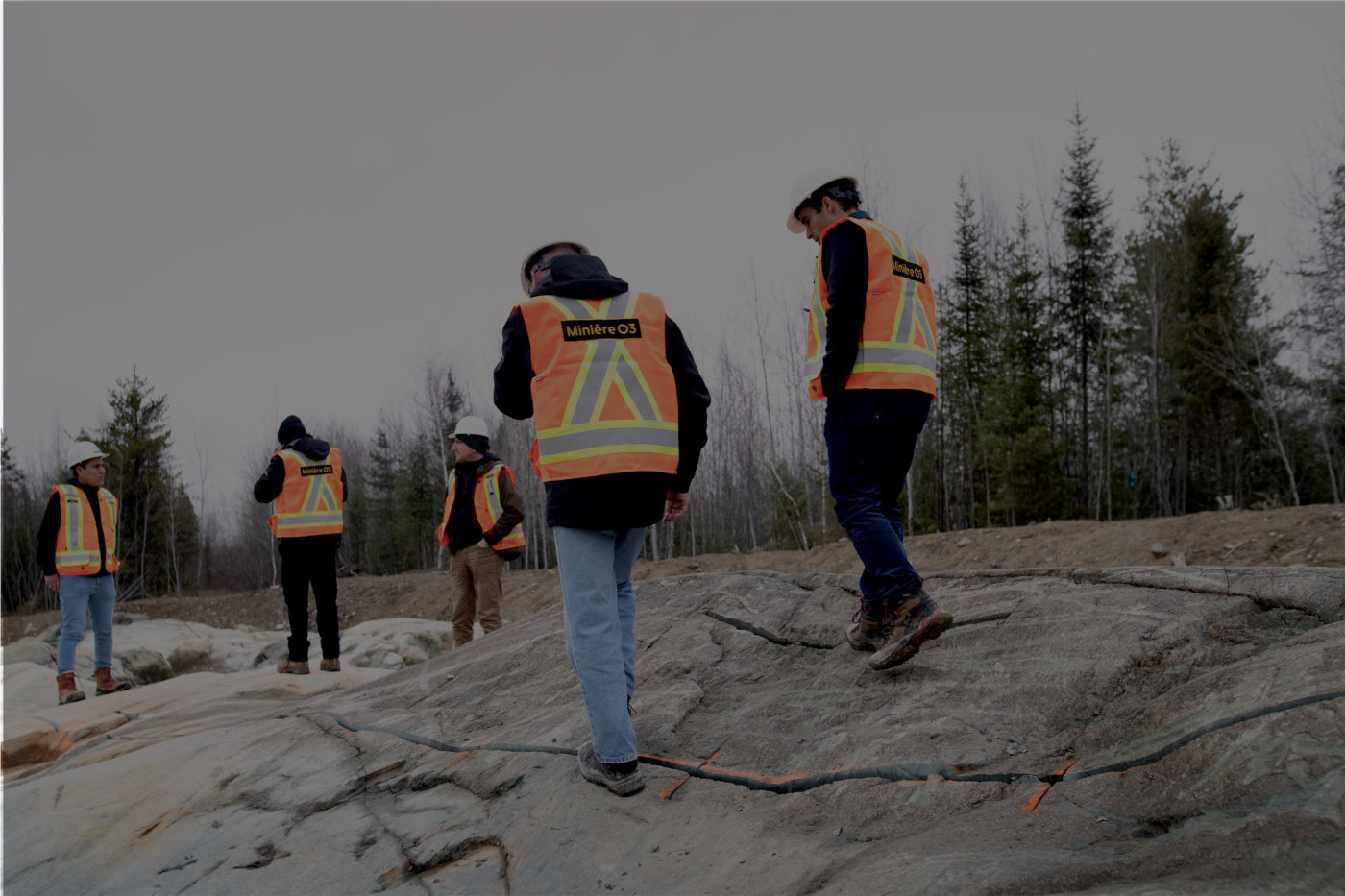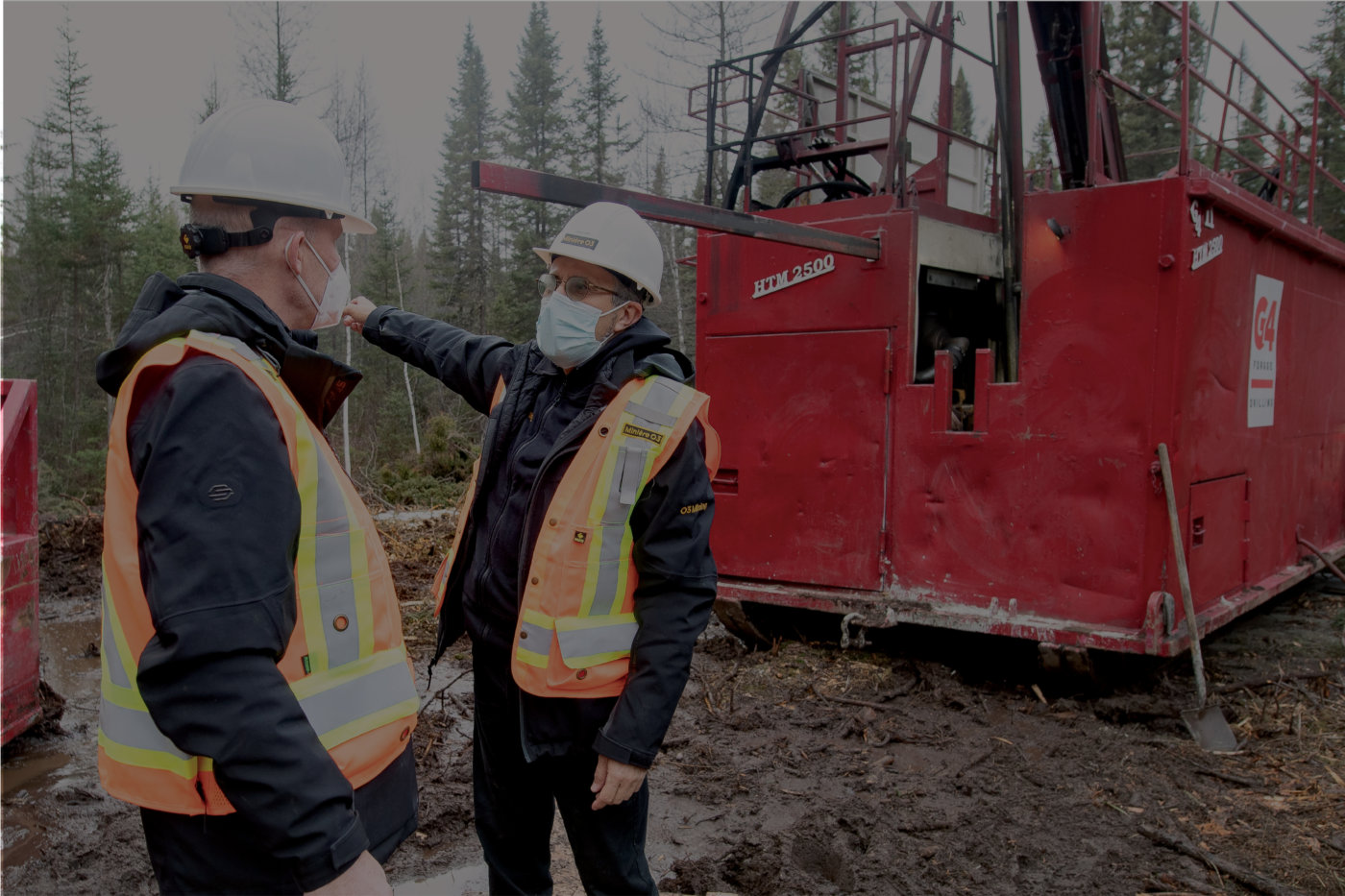o3 BLOG | Educational
Gold Mining Process — How is Gold Mined?
 The gold mining process is complex and goes beyond what most people imagine — miners in hard hats working underground or operating large, noisy mining equipment are images that often come to mind. However, the actual mining of gold ore is only one step in a complex gold mining process. Before miners can extract gold ore from the ground, extensive exploration and development must take place. Gold exploration companies perform numerous tests to identify the size and quality of the ore body and a plan on how to extract the ore as safely, sustainably, and economically as possible.
The gold mining process is complex and goes beyond what most people imagine — miners in hard hats working underground or operating large, noisy mining equipment are images that often come to mind. However, the actual mining of gold ore is only one step in a complex gold mining process. Before miners can extract gold ore from the ground, extensive exploration and development must take place. Gold exploration companies perform numerous tests to identify the size and quality of the ore body and a plan on how to extract the ore as safely, sustainably, and economically as possible.
Gold mining and mineral exploration begin with preliminary prospecting to establish whether a mineral resource exists or whether a recognized mineral resource area extends past the current boundaries. Using GIS tools and extensive geochemical sampling, structural mapping identifies areas of interest and determines the potential for anomalous gold or other precious metals. This process allows mining and exploration companies to choose accurate target locations.
Further targeted geochemical testing, including soil sampling, hydrochemistry, and heap leaching, is sent to specialized analysis laboratories. If the results from these tests are favourable, the gold exploring company will proceed to the drilling phase. The drilling phase entails intercepting the potential ore body at various places around the zone of interest. Rock samples from different parts of the ore body help determine the grade or quality of the resource in the target location. Drilling data also quantify initial discoveries made in previous exploration activities and assess the size and magnitude of a potential mineral resource. Once qualified persons collect and verify adequate information, the resource can now be classified as an inferred mineral resource.

Infill drilling
Infill drilling is a process that helps evaluate whether the mineral resource is continuous across the widely dispersed intercepts to strengthen confidence in the mineral resource. Samples are analyzed in a laboratory to determine the amount of gold or precious metal in the desired volume of rock. The findings from infill drilling, or drill results, provide a mineral resource estimate, which specifies the level of confidence in the mineral resource. A resource estimate will include all levels of resource definition, including inferred, indicated, and measured amounts. Measured resources are selected because they have the highest level of confidence.
Levels of Confidence in Geology
Inferred Mineral Resource
Inferred Mineral Resource refers to an area of a Mineral Resource where an estimate of its quantity, grade, or quality isis based on geological evidence and limited sampling and reasonably assumed but unverified. Sample areas can include outcrops, trenches, pits, workings, and drill holes.
Indicated Mineral Resource
Indicated Mineral Resource refers to an area of a Mineral Resource where qualified persons can estimate its quantity, grade or quality, shape, and other physical characteristics with a level of confidence that supports the economic feasibility of an ore deposit. Unlike an inferred mineral resource, an indicated mineral resource’s grade and geological continuity can be reasonably assumed based on accurate data from extensive testing.
Measured Mineral Resource
Measured Mineral Resource refers to an area of a Mineral Resource where the quantity, grade, density, shape, and physical characteristics are well established and can be estimated with sufficient confidence to support production planning and economic feasibility. The estimate is based on thorough exploration, sampling, and testing data from locations such as outcrops, trenches, pits, workings, and drill holes spaced closely enough to ensure grade and geological continuity.
After completing a resource estimate with a high level of indicated and measured mineral resources, mining engineers use the data to construct a plan for extraction (either open-pit or underground methods) and analyze the mineral resource’s economic feasibility. If it is economically feasible to extract the resource, it will move through the mining cycle.
Exploration occurs at all stages of the active mining cycle and extends or returns to recognized resources. Continuing to develop and de-risk potential resources aids in the extension of the life of an operational mine.

Gold Mining and Extraction
Open-Pit Mining
Mining companies apply exploration drilling results to create a resource model that details the part of the mineral resource from where they will extract or. Miners use heavy mining machinery to drill wide steps known as benches, which separate the rock containing gold (ore) from the rock with no economic quantities of gold (waste). Next, blasting occurs to break down the rock making it easier to move. A fleet of excavators mine designated ore areas and move the gold containing ore to stockpiles. The stockpiles containing the ore will be processed to extract the gold. Trucks move waste to a waste rock stack, which can be rehabilitated to fill previously mined areas.
Underground Mining
Before building an underground mine, there needs to be a series of exploration drilling, investigations, and extensive testing to determine economic feasibility. Parts of the detailed investigation include a scoping study, a pre-feasibility study, and a feasibility study.
Once the mining region has been fully identified, a portal entry and surface infrastructure need to be. Next comes the building of a long tunnel, known as a decline, a return airway, and branching lateral access drives. After the main tunnel is complete, normal lateral ore development and production cycles begin.
